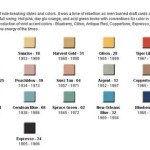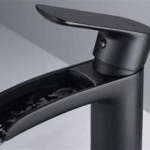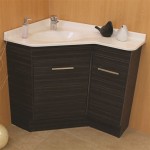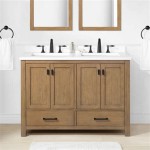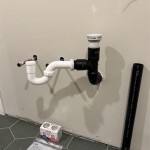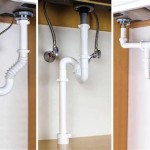Best Ways to Get Mold Off Bathroom Tiles
Mold thrives in damp, poorly ventilated environments, making bathrooms a prime breeding ground, especially on tile surfaces and grout. Addressing mold growth promptly is crucial not only for aesthetic reasons but also for maintaining a healthy indoor environment. Mold can trigger allergic reactions, respiratory problems, and other health issues. Understanding effective mold removal methods is paramount for homeowners and renters alike.
Several factors contribute to mold growth in bathrooms. High humidity levels, often resulting from showers and baths, provide the necessary moisture. Inadequate ventilation prevents the moisture from dissipating, allowing mold spores to settle and proliferate. Leaky pipes, overflowing sinks, and inadequate sealing around tubs and showers contribute to persistent dampness, further exacerbating the problem. Organic materials, such as soap scum and dead skin cells, serve as a food source for mold.
Before initiating any mold removal process, prioritizing safety is paramount. Mold spores can become airborne during cleaning, potentially causing respiratory irritation. Adequate ventilation is essential; open windows and doors or use an exhaust fan to circulate air throughout the bathroom. Wearing protective gear, including gloves, a mask (N95 or higher), and eye protection, minimizes exposure to mold spores and cleaning solutions. Consider wearing old clothing that can be discarded after cleaning to prevent the spread of mold spores to other areas of the house.
Cleaning Mold with Bleach Solution
A bleach solution is a widely recognized and effective method for killing mold on non-porous surfaces like bathroom tiles. Bleach, or sodium hypochlorite, is a strong oxidizer that effectively destroys mold spores and inhibits their regrowth. To prepare a bleach solution, mix one part bleach with ten parts water. Always add bleach to water, not the other way around, to prevent potentially dangerous chemical reactions.
Apply the bleach solution to the affected tiles using a spray bottle, sponge, or cloth. Ensure the tiles are thoroughly saturated with the solution. Allow the solution to dwell on the surface for at least 10-15 minutes to allow the bleach to effectively kill the mold. During this time, maintain good ventilation to avoid inhaling bleach fumes.
After the dwell time, scrub the tiles with a stiff-bristled brush or sponge to remove any remaining mold and residue. Rinse the tiles thoroughly with clean water to remove any lingering bleach solution. Dry the tiles with a clean towel to prevent moisture buildup, which can promote future mold growth. It is crucial to note that bleach can discolor or damage certain materials, so testing the solution on an inconspicuous area before applying it to the entire surface is advisable. Bleach is also ineffective on porous surfaces, as it cannot penetrate the material to kill the mold at its roots.
While bleach is effective at killing mold, it's important to understand that it primarily removes the discoloration, not necessarily the mold structure itself, especially on porous surfaces. For porous materials, other cleaning agents may be more effective at penetrating and eliminating the mold at its source.
Using Vinegar for Mold Removal
White vinegar is a natural and less harsh alternative to bleach for removing mold from bathroom tiles. Vinegar contains acetic acid, which effectively kills a variety of mold species. To use vinegar for mold removal, pour undiluted white vinegar into a spray bottle. No dilution is necessary for optimal effectiveness.
Spray the vinegar directly onto the moldy tiles, ensuring complete coverage. Allow the vinegar to sit on the surface for at least one hour to allow the acetic acid to penetrate and kill the mold. The longer dwell time helps to ensure thorough mold elimination.
After the dwell time, scrub the tiles with a brush or sponge to remove the dead mold and any remaining residue. Rinse the tiles with clean water and dry them thoroughly. Vinegar has a distinctive odor, which will dissipate over time. Increasing ventilation during and after cleaning can help to minimize the smell. Vinegar is generally safe for most surfaces, but testing it on an inconspicuous area before applying it to the entire surface is still recommended.
Vinegar is a good choice for those who prefer a natural cleaning solution and are concerned about the harshness of bleach. It is also effective at preventing mold regrowth on surfaces after cleaning.
Baking Soda Paste for Grout Cleaning
Grout, the porous material between tiles, is particularly susceptible to mold growth. Baking soda is a mild abrasive and natural antifungal agent that can effectively clean mold from grout lines. To create a baking soda paste, mix baking soda with water until a thick paste forms.
Apply the baking soda paste to the grout lines using a toothbrush or small brush. Ensure the paste is worked into the grout to effectively penetrate and remove the mold. Allow the paste to sit on the grout for at least 10-15 minutes to allow it to loosen the mold and stains.
Scrub the grout lines vigorously with the brush to remove the mold and stains. Rinse the grout thoroughly with clean water to remove any remaining baking soda residue. Dry the grout with a clean towel or cloth to prevent moisture buildup.
For stubborn mold stains, mix baking soda with hydrogen peroxide to create a more powerful cleaning paste. Hydrogen peroxide has bleaching properties that can help to lighten stains and kill mold. Apply the paste as described above, allowing it to sit for a longer period before scrubbing and rinsing.
Regular cleaning of grout lines with baking soda can help to prevent mold regrowth. It is a gentle and effective way to maintain the cleanliness and appearance of bathroom tiles.
Steam cleaning is another effective method for removing mold from bathroom tiles and grout. Steam cleaners use high-temperature steam to kill mold spores and loosen dirt and grime. The high heat effectively sanitizes surfaces without the need for harsh chemicals. When using a steam cleaner, follow the manufacturer's instructions carefully. Direct the steam nozzle along the grout lines and over the tile surfaces, allowing the steam to penetrate and kill the mold. Wipe away any excess moisture with a clean cloth.
Borax, a natural mineral, is another option for mold removal. Mix one cup of borax with one gallon of water. Apply the solution to the affected area, scrub, and let it sit for several minutes before wiping clean. Unlike bleach, borax does not release harmful fumes and is less likely to damage surfaces. However, it is still advisable to test it on a small, inconspicuous area first.
Preventing mold growth is often more effective than treating it. After showering or bathing, ensure the bathroom is well-ventilated by opening windows or using the exhaust fan. This helps to remove moisture and prevent mold spores from settling. Wipe down wet surfaces, such as shower walls and floors, with a towel or squeegee after each use to minimize moisture buildup. Regularly clean the bathroom, paying particular attention to areas prone to mold growth, such as grout lines and corners. Repair any leaks promptly to prevent water damage and mold growth. Consider using a dehumidifier in the bathroom to reduce humidity levels, especially in poorly ventilated bathrooms. Sealing grout lines with a grout sealer can help to prevent water penetration and mold growth. Reapply the sealer periodically as recommended by the manufacturer.
Proper ventilation is key to preventing mold growth. Ensure that the bathroom exhaust fan is functioning correctly and use it during and after showers or baths. If the bathroom does not have a fan, consider installing one. Open windows to allow fresh air to circulate. Improve air circulation by keeping the bathroom door open when not in use. Avoid placing items that can trap moisture, such as damp towels or bath mats, directly on the floor. Hang them up to dry to prevent mold growth on the floor and on the items themselves.
Addressing plumbing issues promptly is crucial in preventing mold growth. Leaky faucets, showerheads, and pipes can create a constant source of moisture, promoting mold growth. Repair any leaks as soon as they are detected. Ensure that the toilet is properly sealed to the floor to prevent water from seeping underneath, which can lead to mold growth. Check for condensation on pipes and insulate them if necessary to prevent moisture buildup.

How Do I Remove Black Mould From Shower Floor

Black Mold In The Shower How To Clean It Kitchen With Matt

How To Clean Mold In Shower Grout Tips And Tricks Certified Care

Black Mold In The Shower How To Clean It Kitchen With Matt

What Is The Best Way To Clean Shower Grout Mold Anita S Housekeeping

How To Get Rid Of Pink Mold In Your Shower

The Ultimate Guide On How To Clean And Get Rid Of Mold Pro Housekeepers

Cleaning Mrs Hinch Fans Share Easy Ways To Clean Tile Grout Express Co

Kill Bathroom Mould Without Bleach Electrodry Blogs

How Can I Clean Mildew From Grout Puroclean Hq
